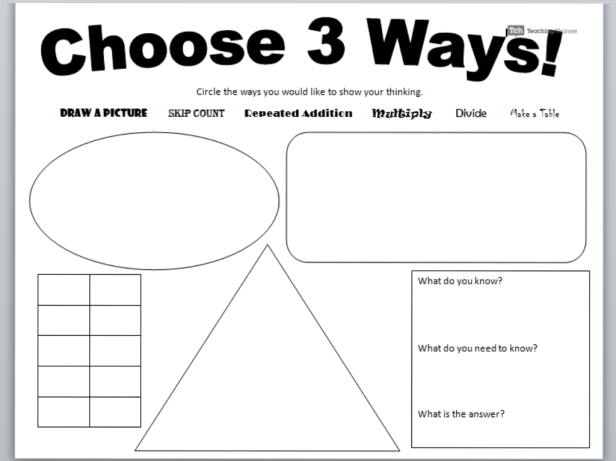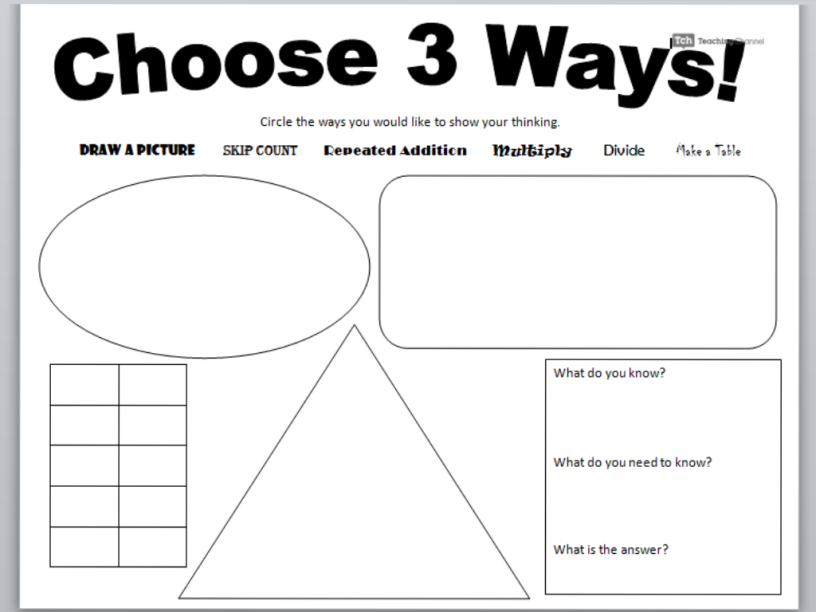At the beginning of class we had a discussion about the assigned videos and what we liked, didn’t like and what we needed clarification on. I really enjoyed the videos and got lots from them. During the Persistence to Problem Solving Video the teacher used a sheet for math questions (shown below). I loved the sheet because it gets the children to think in creative ways about how to solve the problem and provides ideas about math processes to use.

The video How to Teach Math as a Social Activity also had really great stuff in it. I loved that he gave them a problem they could solve in many creative ways. He let the students struggle with the problem for a bit on their own, then got them to turn to their neighbour and discuss how they got their answer. If they hadn’t arrived at an answer yet the other student would help them to work it out. They would then come together in a fish bowl with some students explaining it and some observing their peers and asking questions.
Another problem we had to work through was finding three ways of figuring out how many marbles there were. And then we discussed with neighbours how we came up with our answers. Then it went back to the class (think, pair, share). It was really interesting to see how some students came up with their answers. Some of the ways I hadn’t even seen until it was explained.
What is the sum of all the numbers from 1 to 100? We discussed with our neighbours. Some of the ways we came up with the answer is:
1+2+3+4+5+6+7+8+9+10
10+9+8+7+6+5+4+3+2+1
11+11+11+11+11+11+11+11+11+11
10(11)/2
1+2+3…………+98+99+100
100+99+98……+1+2+3
101+101+101….+101+101+101
100(101)/2
BCAMT – BC association of Math Teachers (resource we will have when we become teachers?)
Tim posed the question: if I want to get to my wood shed 200 feet from my house in the rain, would running or walking cause me to have less drops land on me? Tim drew a graph on the board with a curve and found that running resulted in less drops. Another idea one of his students had given him was to put on a shirt and walk back and forth, take the shirt off and put a new one on and run back and forth. Then weigh the two shirts and see which is heavier.
Hewlett paid $13 for 3 muffins and a brownie at a bakery. How much do you think each item costs?
3×3=9
13-9=4
$3 for each muffin and $4 for a brownie
3.50×3= 10.50
13-10.50= 2.50
3.25×3= 9.75
13-9.75= 3.25
Could change the dollars into quarters by multiplying $13 by 4 (4 quarters in a $1) in order to find out to the nearest quarter.
I really like this question because there is no right answer and the kids can get really creative in their thinking and it allows them to share their answers knowing they aren’t wrong. They just have to explain their reasoning.
